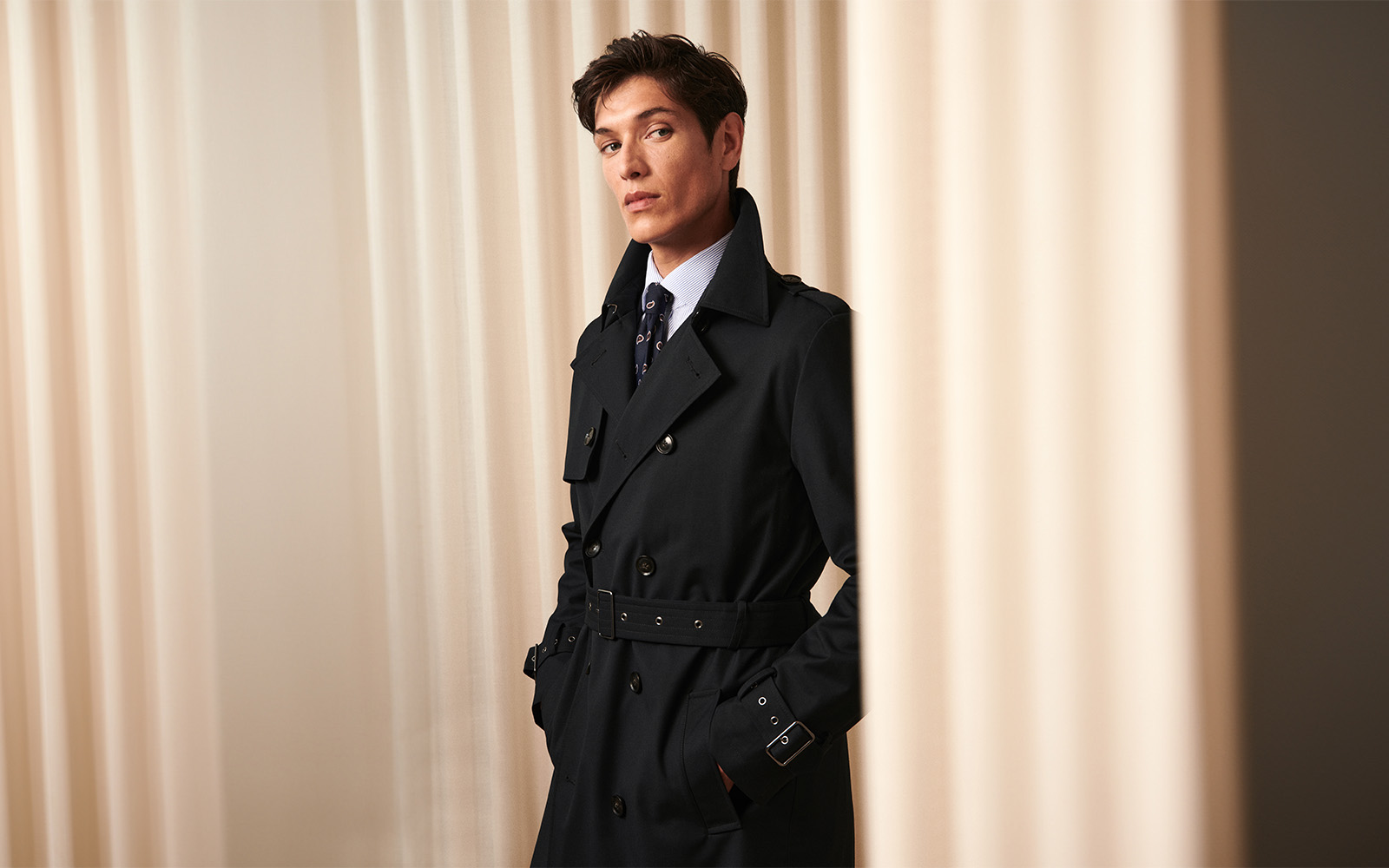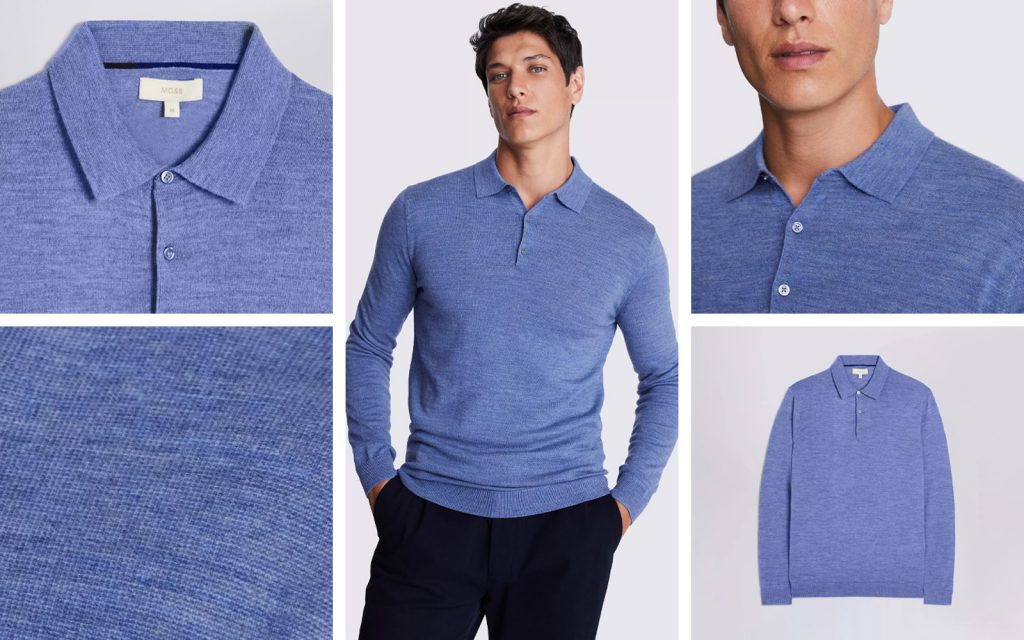How to wear: the navy trench
Tailored to take on the elements.
A BRITISH TAILORING CLASSIC UPDATED FOR TODAY
The trench coat has been a staple in British wardrobes for decades. Originally used by army officers during WWI to keep dry in the trenches (hence the name), fashion houses quickly picked up on the durable design, reworking it for the fashion conscious. Now it’s a fundamental piece of outerwear, often used as a stylish way to keep out the rain.
Our take is a crafted from a durable navy cotton, featuring a storm flap for authentic detail and a classic trench belt to sculpt the frame. It’s a versatile piece that can be worn at work or on the weekend, but what do you wear underneath? See below for our styling tips.

Work week
A trench coat truly shines when it’s combined with workwear. A tailored pale blue shirt with a navy tie peeking out from the collar? A smart, classic look that exudes sophistication.
With its double-breasted closure, a trench instantly elevates any outfit – in workwear’s case, however, it enhances it, becoming an almost extension of your suit. Finish with a pair of chunky loafers and you’re ready for the working week.

Weekend date
If you’re heading on a casual weekend date, skip the suit and go for something a bit more comfortable. Whether you’re off bowling, the cinema or a stroll through the park, a boxy tee combined with worker chinos makes for a modern outfit that looks and feels put together, particularly with the addition of accessories – in this case navy cap and chunky trainers. Add the trench coat into the mix and you’ve hit the smart casual nail on the head.

Walks in the city
Casualwear doesn’t have to be basic. If you want a cohesive, comfortable look that will keep you warm on walks too, this is it – a chunky cable knit spun with alpaca wool (for extra softness) combined with a pair of cotton-rich joggers and a chunky trainer, and you’re prepared for your weekend walks while still looking fresh. The trench coat looks great layered over this look – the relaxed fit of the outfit softens the aesthetic, while the trench coat provides both protection from the elements and an extra level of refinement.









